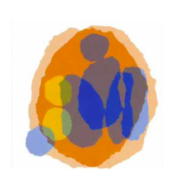Presentation “Baby observation and analytic presence”
The baby observation, such a peculiar method and something so difficult to understand in its real strength and importance, is here described, above all, as a fundamental tool for learning to “be with”. Learn to find within oneself the ability to tolerate another presence, refraining from immediately resorting to the theory, to interpretations, but simply letting oneself be filled by what the other offers us, taking the necessary time to discover how that action takes place, what is repeated and what changes, which affects come into play and who takes part to these.
Entering the house of a mother and her new-born baby, as well as a nursery school or a pediatric or neonatal hospital ward, requires a good deal of courage and that mental structure and security, the internal setting, which probably is the main and the most difficult tool of any analyst in formation. It means entering into an organization pre-existing to us, in an intimacy, especially that of the symbiotic mother-child dyad, in which one has to find a proper place, a right distance from which to build a relationship that is based not so much on words and on active intervention as much as on silent, regular and continuous presence. A presence that, thanks to that step backwards given by silence and non-interaction, may be different from all the others of everyday life, can offer a different view and describe the complexity of what continually happens around us.
It therefore seems that the method of observation can teach, or at least let the observer experiment, a real analytic presence and from this it derives its connection with many other fields of study and work of the analyst.
The purpose of this issue is indeed to highlight the usefulness of the observation method for the future analyst, an issue that is dealt with in the articles presented here, but, above all, it is emphasized by the fact that this number is linked to a second, which will be released in a few months and it will concern the therapeutic work with families, where it is essential to always have in mind and be ready to accept the most archaic parts of the mind and all that is expressed through the unsaid.
The issue opens with the article by Dr. Denis Mellier who, in his in-depth treatment of childhood observation, introduces us to the complexity of this method, to the emotions connected to the path of observation and in its many times, all under a nuance group that emphasizes the particular work of the supervision group.
The issue goes on with the article by Dr. Susanna Messeca who, with careful and accurate words, introduces us into the emotions that working with suffering people produces in us, recalling the analyst’s past and personal experience, in particular his pains and memories of particularly painful experiences which, in contact with the patient, re-emerge.
It continues with the work of Dr. Maria Vittoria Squillante who talks about the baby observation according to the method of Esther Bick, who, after having elaborated it, introduced it in the psychotherapy and psychoanalytic training course of the Tavistock Clinic in London. The author also reports her experience in a department of child neuropsychiatry in which the method of observation was applied for the formation of the hospital teams and a therapeutic project focused on the work with families.
In conclusion, finally, Squillante describes the subtle but firm link between childhood observation and psychoanalysis and psychotherapy.
To illustrate what is explained at a theoretical level, two observation sessions are reported, conducted by Dr. Klervi Isidor that, whit some comments, introduces us directly in what an observation consists. Working from the raw material that is reported in a detailed manner and, only later, during the supervision, with the group reading the report and the subsequent discussion, a work of analyzing the collected data. The comments that are here offered come from this second passage.
The article by Dr. Azzurra Mecacci goes into the history of the method of infant observation by first recapitulating a more global version with the great psychoanalytic authors and then studying the development of the method in Italy, above all by describing the work of the Pre-Infant Observation that focuses on the path and the evolution that a woman makes in the road to become a mother and the connections between this period and the future motherhood.
The next article is that of Dr. Susanna Piermattei, who describes the concepts of fusionality and symbiosis in an attempt to underline the existence, in adults, of infantile and archaic non-pathological quotas and to explain why child observation is so valuable also for the analyst who will work with the adult.
Dr. Piermattei also offers a second observation session in which the comments focus mainly on the relationship between the observer and the observed, with all the contrasting and co-present feelings that the situation arouses in both participants.
The last article is that of the doctors Paola Balducci and Mariella Marasà who explain their experience as trainers of nursery schools, based on the psychoanalytic model and the method of the baby observation that allows operators to live in an authentic way the different situations they can face with and be in contact with their most primitive emotions.



